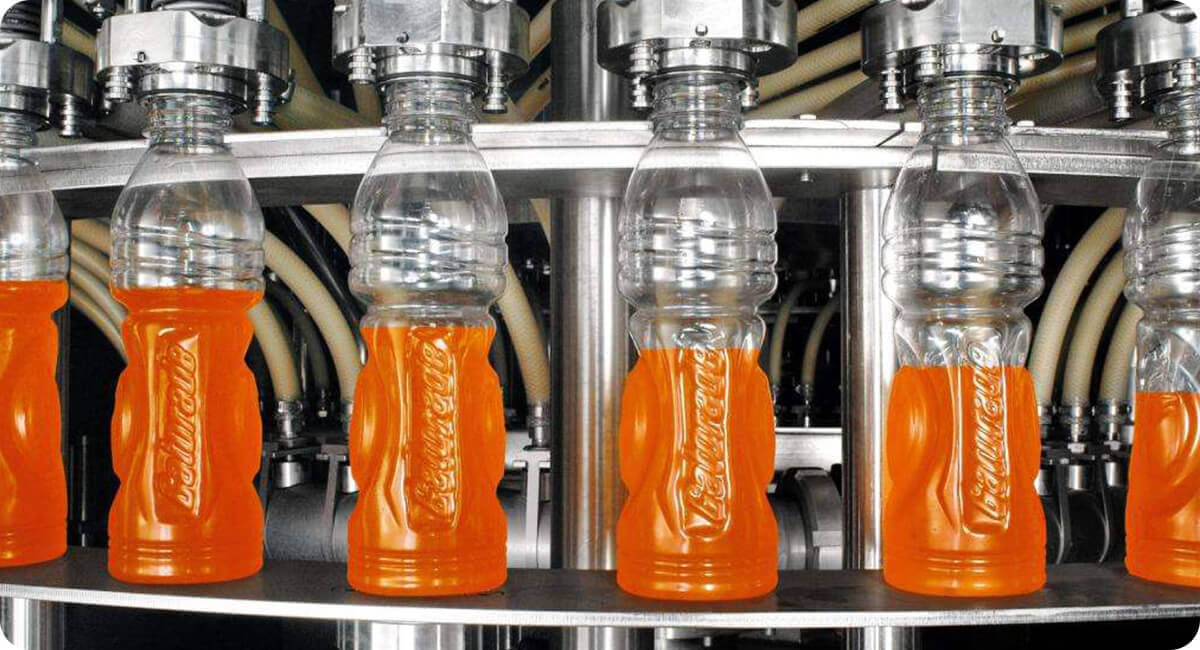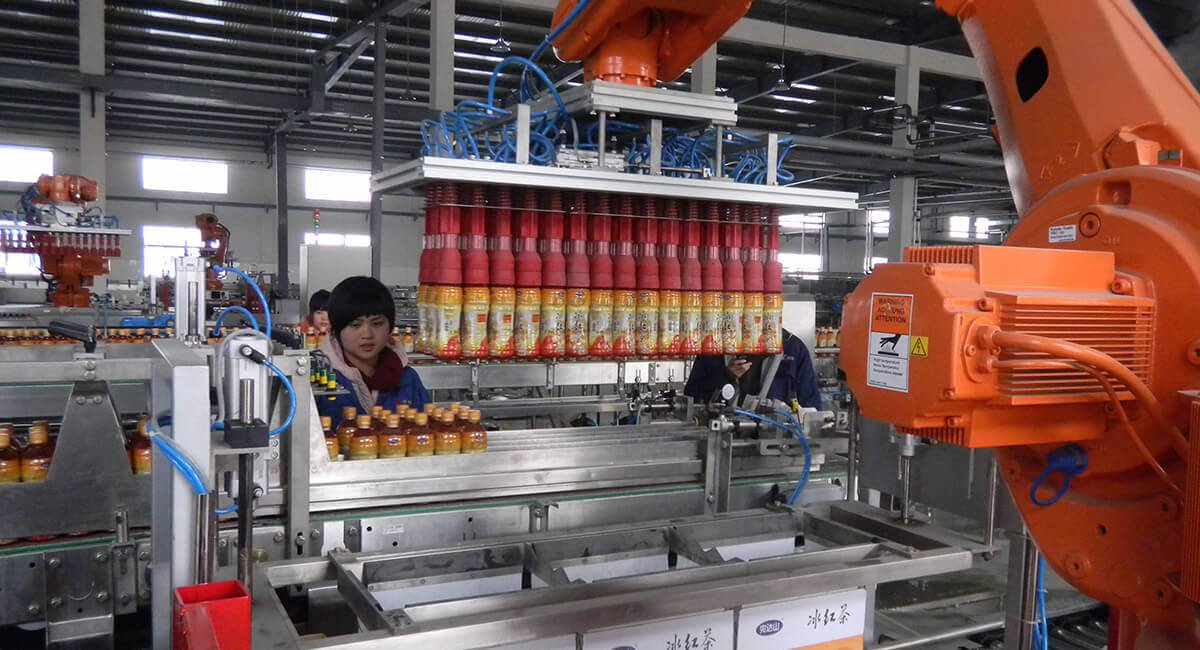Advanced Liquid Package Solution
Automated liquid filling solutions are key to production efficiency and product quality in the beverage industry. Whether you’re packaging still water or fruit juice, choosing the right filling machine is critical to maintaining hygiene, taste, and shelf life.
While water and juice may seem similar at a glance, the machines used to fill them differ significantly in design, function, and technical requirements. In this article, we’ll explore the core differences between a water filling machine and a juice filling machine, and help you make the right choice for your business.

A water filling machine is specialized equipment used for packaging different types of water into bottles—typically purified, mineral, or spring water. It is widely used in beverage factories, water bottling plants, and commercial production lines.
Water filling machines are usually based on gravity or pressure filling principles, allowing fast and hygienic filling with minimal complexity. These systems are commonly found in:
Automatic water bottle filling machine lines
Bottling water filling machine systems
Commercial water bottling machine facilities
Their design is typically optimized for high-speed operation, low maintenance, and long production cycles with consistent fill levels.

A juice filling machine is engineered for beverages that contain more ingredients, flavors, and often require thermal processing. These machines are used to fill fruit juice, nectar, tea drinks, or juice with pulp.
Because juice is more prone to microbial contamination than pure water, filling equipment must ensure:
Hot filling capability (typically between 85–95°C)
Enhanced cleaning and sterilization processes
Special filling technology to preserve flavor and nutrients
Juice filling lines usually integrate multiple components such as pasteurizers, sterilization tunnels, and bottle warming/cooling systems to ensure product safety and stability.

Though both machines serve similar purposes, their structural and technical differences are significant.
One of the most critical differences lies in filling temperature:
Water Filling Machines generally operate at room temperature or slightly cooled conditions. There is no need for heat-resistant components or bottle conditioning systems.
Juice Filling Machines, on the other hand, often require hot filling. The liquid must be filled at high temperatures to kill bacteria and extend shelf life, which means every component in contact with the product must be able to withstand heat and maintain sanitary conditions.
Since water is a low-risk product, water filling machines often use SUS304 stainless steel. However, juice filling machines—handling sticky, sugary, and perishable liquids—typically require SUS316 food-grade stainless steel for enhanced corrosion resistance and food safety.
In addition, juice lines come equipped with advanced CIP (Clean-in-Place) or SIP (Sterilize-in-Place) systems, which are essential for preventing microbial growth in tubing, valves, and tanks.
Water is filled using gravity or pressure filling systems. Gravity filling works well due to the water’s low viscosity and consistent density.
Juice, especially when filled hot or containing pulp, often needs vacuum filling or hot fill technology. These ensure minimal air incorporation, reduce foaming, and prevent oxidation—essential for preserving product quality.
Juice filling systems are structurally more complex than water systems. A standard juice filling line includes:
Beverage pasteurization unit
Hot filling valve system
Cooling tunnel or bottle warmer (to prevent bottle deformation)
CIP station for automatic cleaning
In contrast, a typical drinking water bottle filling machine is a compact, streamlined unit with fewer auxiliary devices—ideal for high-speed, large-volume production.
Due to the added temperature control, hygiene measures, and thermal processing systems, juice filling machines are typically more expensive and complex than water filling machines. This difference in cost is justified by the higher demands of juice production.
Water bottling systems—like commercial water bottling machines—are often more economical to purchase, operate, and maintain, especially when bottling simple products like purified or mineral water.
Yes, it’s possible to use multi-functional filling machines that can handle both water and juice. These are often referred to as 3-in-1 or combiblock filling systems, where rinsing, filling, and capping are integrated.
However, using one machine for both products comes with caveats:
It requires thorough cleaning between product changeovers.
Separate filling valves may be needed to accommodate both ambient and hot fills.
The machine must be built with versatile control systems and adjustable parameters to handle different fluid properties.
For businesses with diverse product lines but limited space or budget, multi-functional machines offer flexibility. Still, dedicated lines are more efficient for large-scale operations focused on high output and fast turnover.
When deciding between a water filling machine and a juice filling machine, ask yourself the following:
What type of beverage am I filling? (Flat water vs. juice vs. pulp-based drinks)
Does my product require hot fill or cold fill?
What is my projected production volume?
How important is machine flexibility for future expansion?
What is my hygiene and shelf-life requirement?
For businesses that produce only drinking water, investing in a high-speed automatic water bottle filling machine or bottling water filling machine is ideal. These systems are cost-effective, scalable, and optimized for water’s physical properties.
On the other hand, if your product involves fruit juices, tea, or any beverage requiring heat treatment, a specialized juice filling line is essential to maintain product safety and taste integrity.
In summary, while water and juice are both bottled liquids, they require distinctly different filling technologies to ensure efficiency, quality, and safety. From thermal handling and valve design to cleaning systems and material selection, juice filling machines are more advanced and tailored to deal with complex liquid properties.
Understanding these differences allows you to select the right filling system that aligns with your product characteristics and production goals.
If you are looking for a reliable solution tailored to your bottling needs, ALPS Machine offers a full range of drinking water bottle filling machines, commercial water bottling machines, and automated juice filling systems—designed for precision, hygiene, and productivity. With advanced technology and global service support, ALPS Machine helps you streamline your production and elevate your brand.

By continuing to use the site you agree to our privacy policy Terms and Conditions.